Physical Education > QUESTIONS & ANSWERS > FTCE Physical Education K-12: Book Test Review Latest 2022 Graded A+ (All)
FTCE Physical Education K-12: Book Test Review Latest 2022 Graded A+
Document Content and Description Below
FTCE Physical Education K-12: Book Test Review Latest 2022 Graded A+ BMI ✔✔weight to height squared Spatial Awareness - Movement Concepts: Directions ✔✔This refers to the desired route of ... movement, whether it is up or down, forward or backward, right or left. Spatial Awareness - Movement Concepts: Planes ✔✔This refers to somewhat specific pathways defined as circular, vertical, and horizontal. Spatial Awareness - Movement Concepts: Locations & Levels ✔✔This defines the relationship of the body to the floor or apparatus or height in space, whether it is low, medium, or high. Spatial Awareness - Movement Concepts: Personal Space ✔✔This is the the immediate area surrounding a person, including the space within the natural body extensions. Quality of Movement: Effort ✔✔Quality of movement that is the mental impulse from which movement originates. Quality of Movement: Flow ✔✔This factor establishes how movements are purposely sequenced to create continuity of movement, usually in terms of interrupted (bound) or sustained (free) flow. Interrupted flow stops at the end of a movement or part of a movement. Sustained flow involves smoothly linking different movements or parts of movements. Quality of Movement: Rhythm ✔✔This quality of movement is the way in which the temporal factor of movement is organized, including beat, tempo, measure, accents and dynamics. Quality of Movement: Speed/Time ✔✔This movement quality deals with the speed and duration of the movement, moving to a constant rhythm or accelerating or decelerating. Movement Concept of Relationships ✔✔Concept for with whom and/or to what the body relates. Near/Far ✔✔Concept for close to the body/object or a distance away from the body/object. It must involve a body plus another body or an object as it refers to the distance between them. The relationship of moving together or with opposition. On/Off ✔✔Concept for engaged in an activity or suspension of an activity. Engaged in a movement activity or in suspension of a movement activity, which may involve multiple bodies but also can involve only a single body. Together/With Opposition ✔✔This relationship necessarily involves two or more bodies. Symmetrical/Asymmetrical ✔✔This movement involves a body plus one or more other bodies or objects: If they have corresponding points or proportions. Principle of Specificity ✔✔A principle that states to improve certain body parts, muscles, or sports movements and techniques, one must exercise those specific parts, muscles, or movements and techniques. Exercising the lower body will not strengthen the upper body or vice versa. Principle of Overload ✔✔This principle means extra or unaccustomed stimuli are required to make the body respond beyond its normal levels. Principle of Adaptation ✔✔This principle means the body adjusts to processes and demands, making activities easier over time and eventually requiring variation for continuing progress. Principle of Progression ✔✔This principle means individuals must progress at certain rates natural to them to achieve results and avoid injuries. The Highest Level ✔✔In the central nervous system's hierarchy of motor control, this level of the brain contains command neurons that initiate the intention to produce body movement. The Middle Level ✔✔In the sensorimotor cortex of the cerebral cortex, the basal ganglia of the subcortical nuclei, the cerebellum, and the brain stem produce a motor program by determining necessary postures and movements and coordinating these with information about body posture and surroundings that they receive from eye, vestibular, skin, joint, and muscular receptors. The Lowest Level ✔✔In the central nervous system hierarchy of motor control, it is the motor neurons and interneurons, which determine muscle tension and joint angles. Perceptual Motor Skill ✔✔This development refers to the child's developing ability to interact with the environment, combining use of the senses and motor skills. The developmental process of use of perceptual or sensory skills and motor skills is viewed as a combined process. Static Strength ✔✔This is used when you try to move an immoveable object, or carry a heavy object. There is no movement of the object. The muscles do not change length. Explosive Strength ✔✔Used when exerting a force in a short, fast burst. This is similar to power For example throwing a ball or l [Show More]
Last updated: 2 years ago
Preview 1 out of 11 pages
.png)
Buy this document to get the full access instantly
Instant Download Access after purchase
Buy NowInstant download
We Accept:

Reviews( 0 )
$10.00
Can't find what you want? Try our AI powered Search
Document information
Connected school, study & course
About the document
Uploaded On
Oct 20, 2022
Number of pages
11
Written in
Additional information
This document has been written for:
Uploaded
Oct 20, 2022
Downloads
0
Views
117

.png)


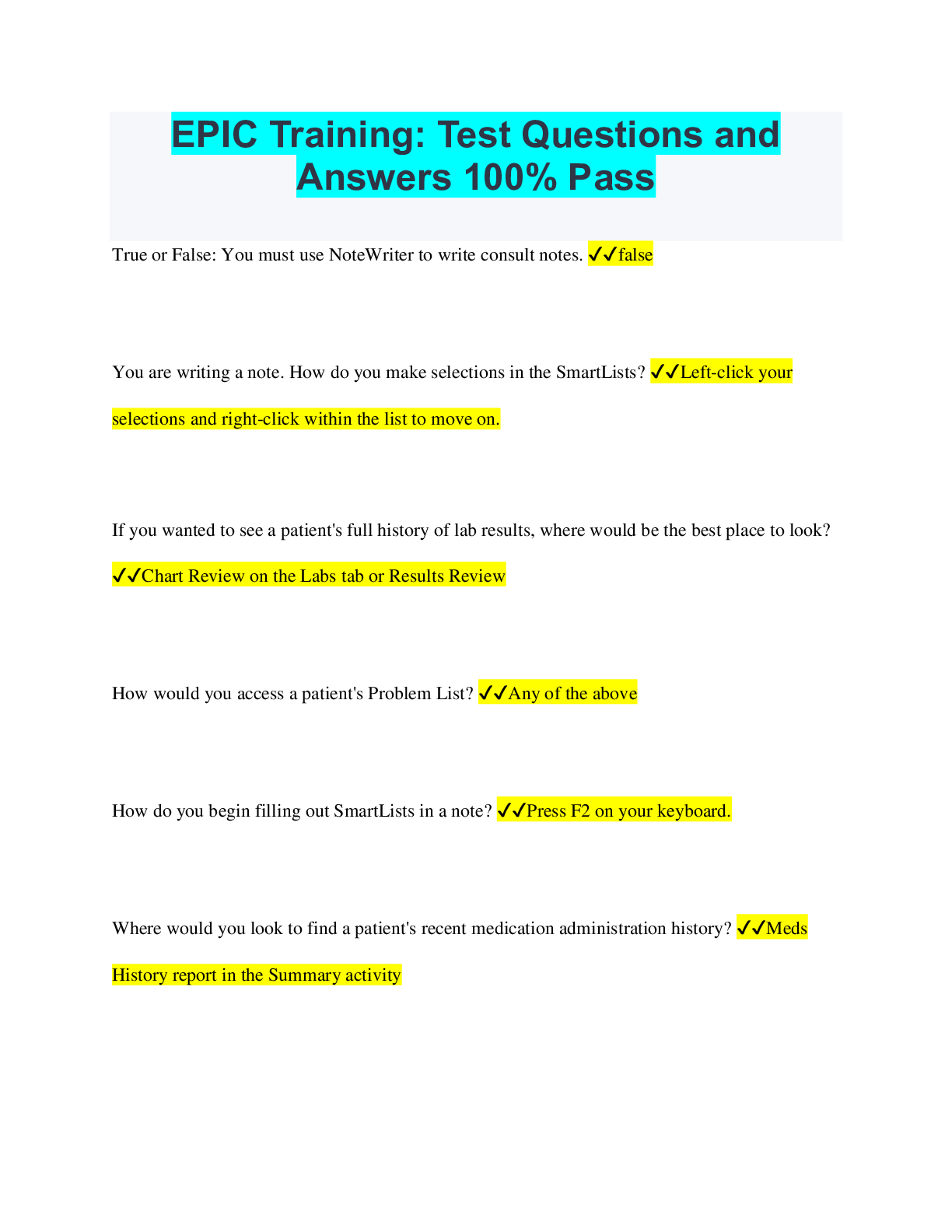
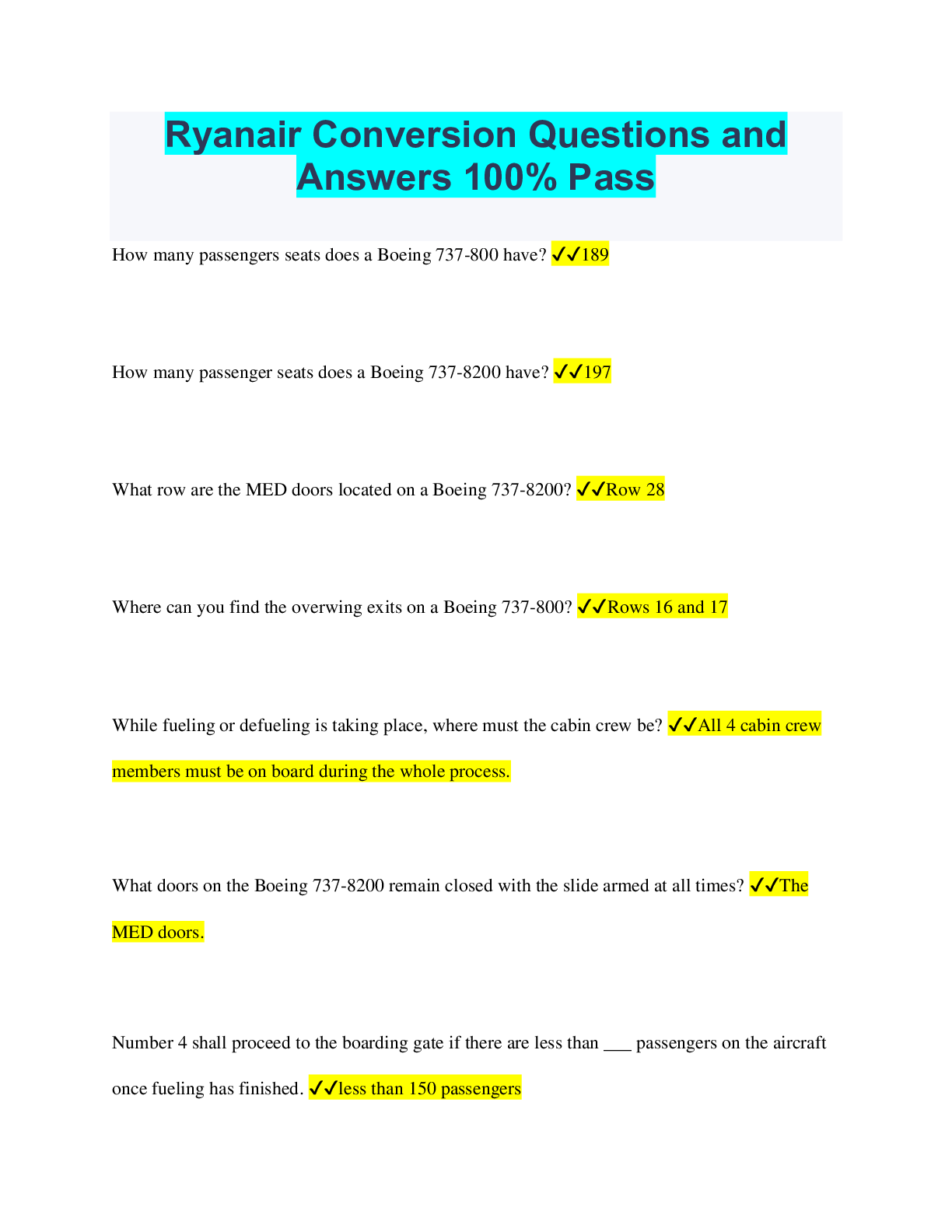
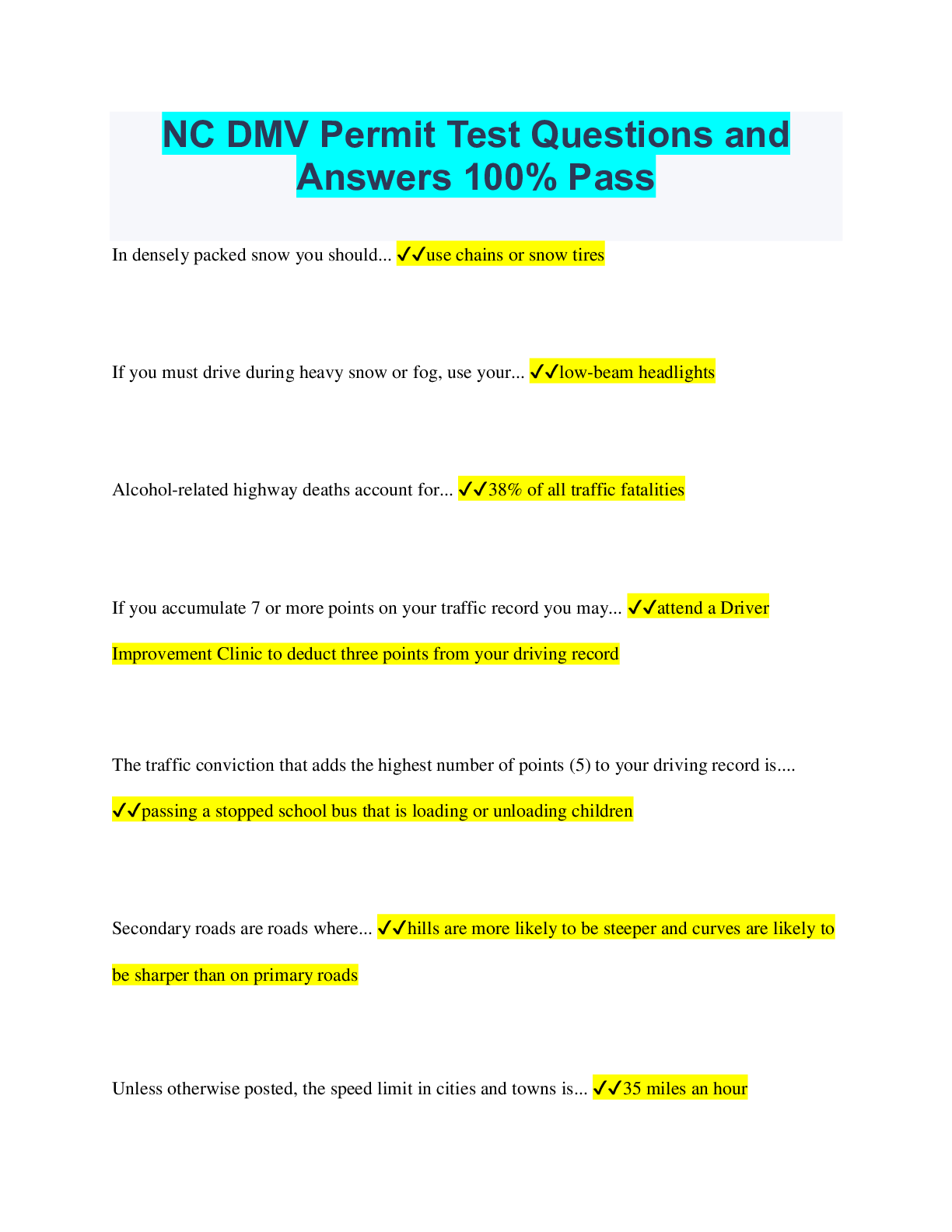
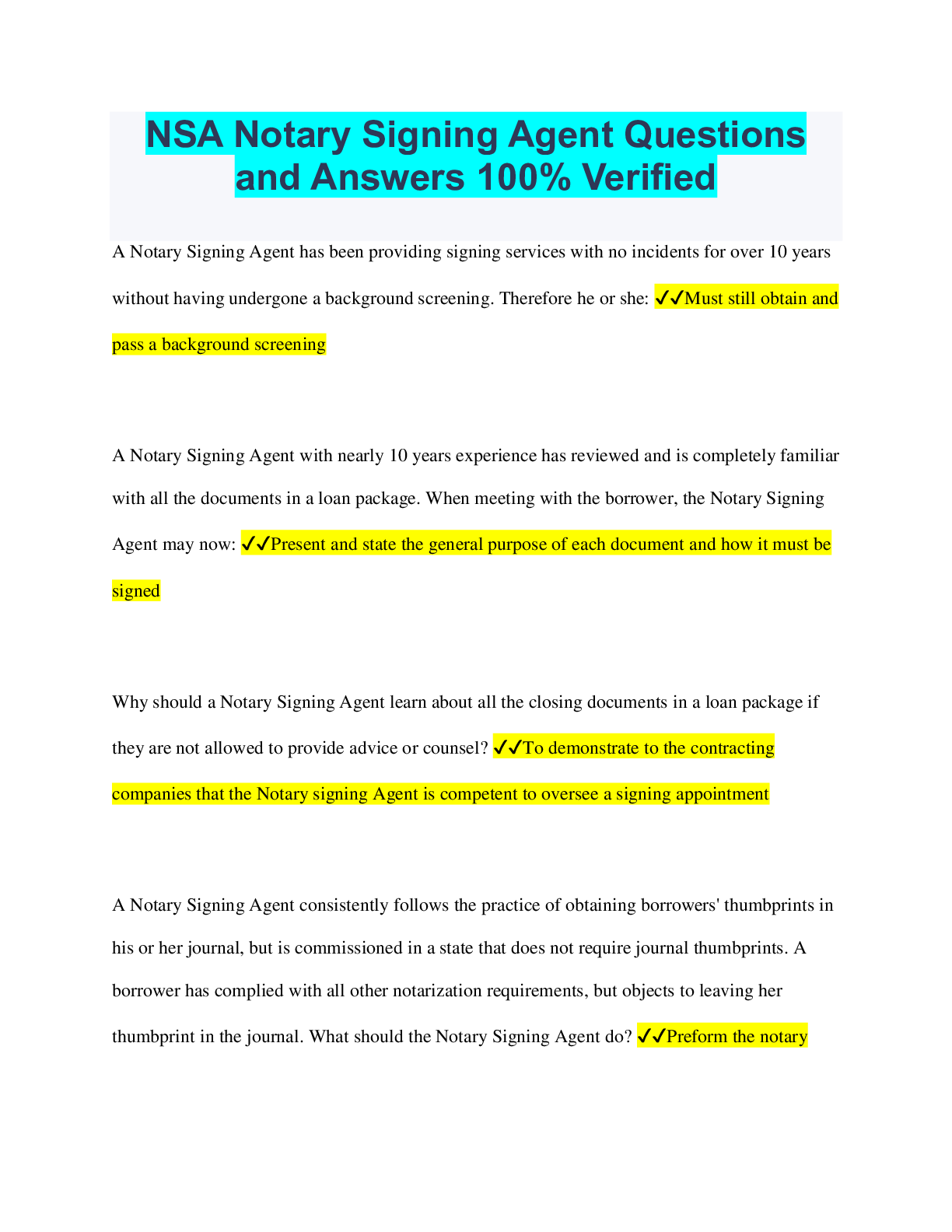
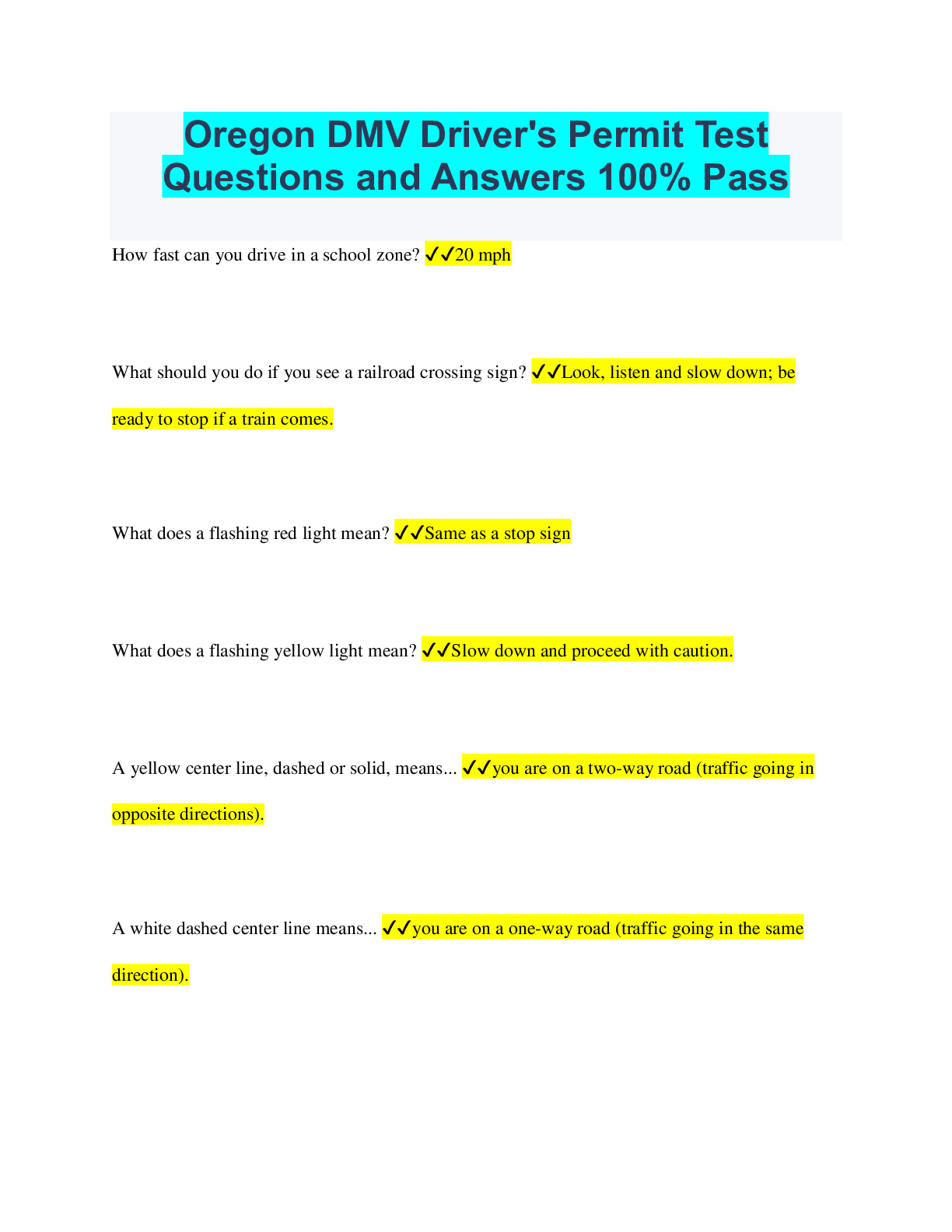
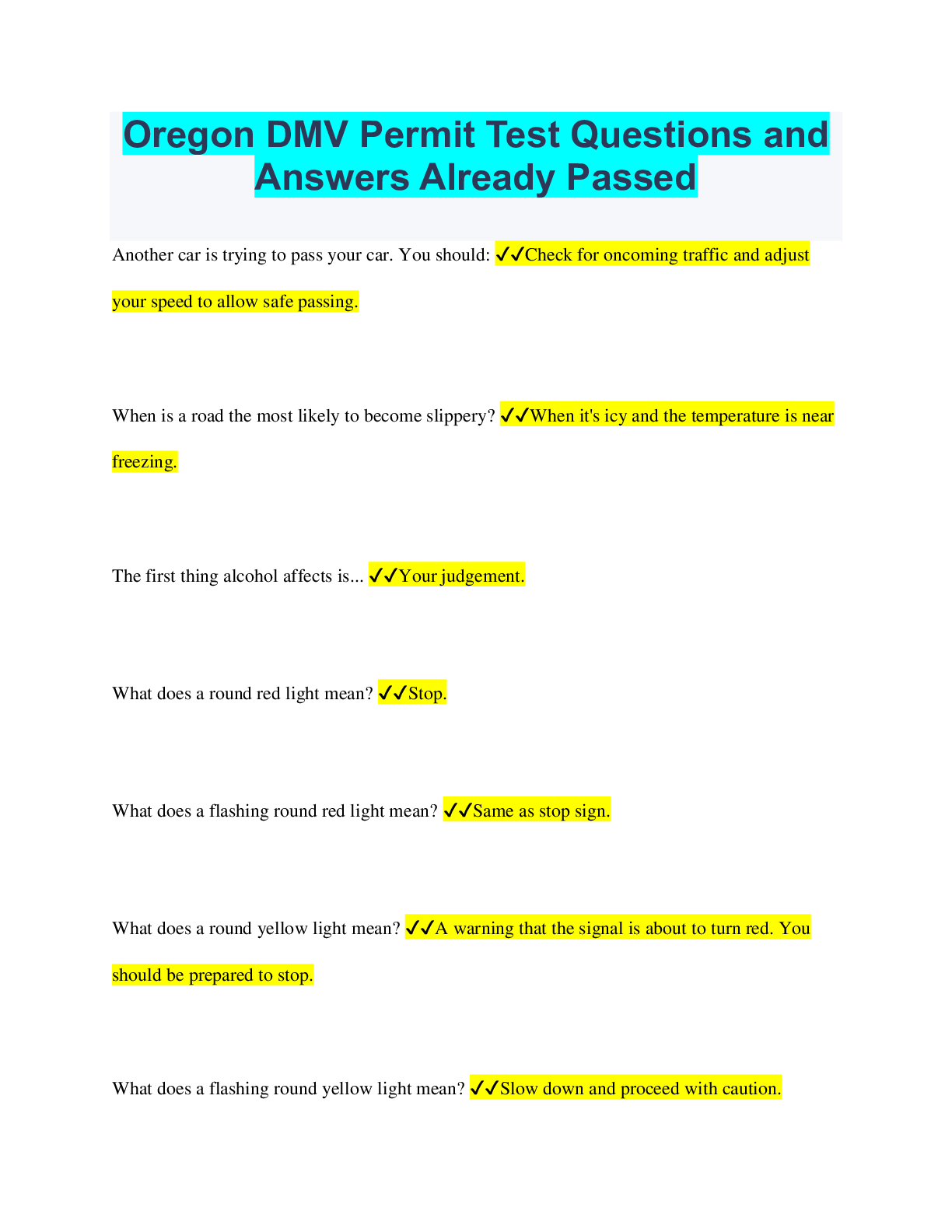
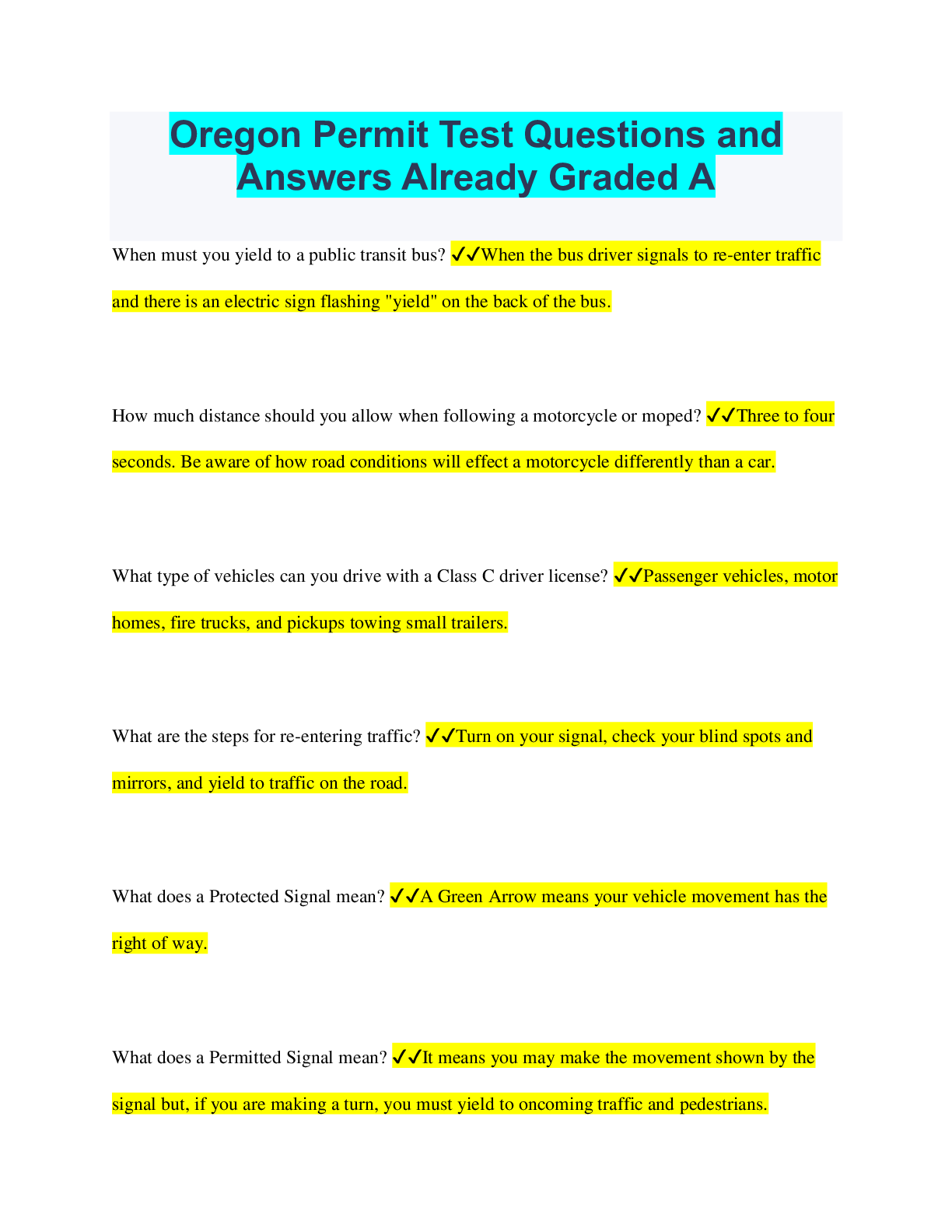
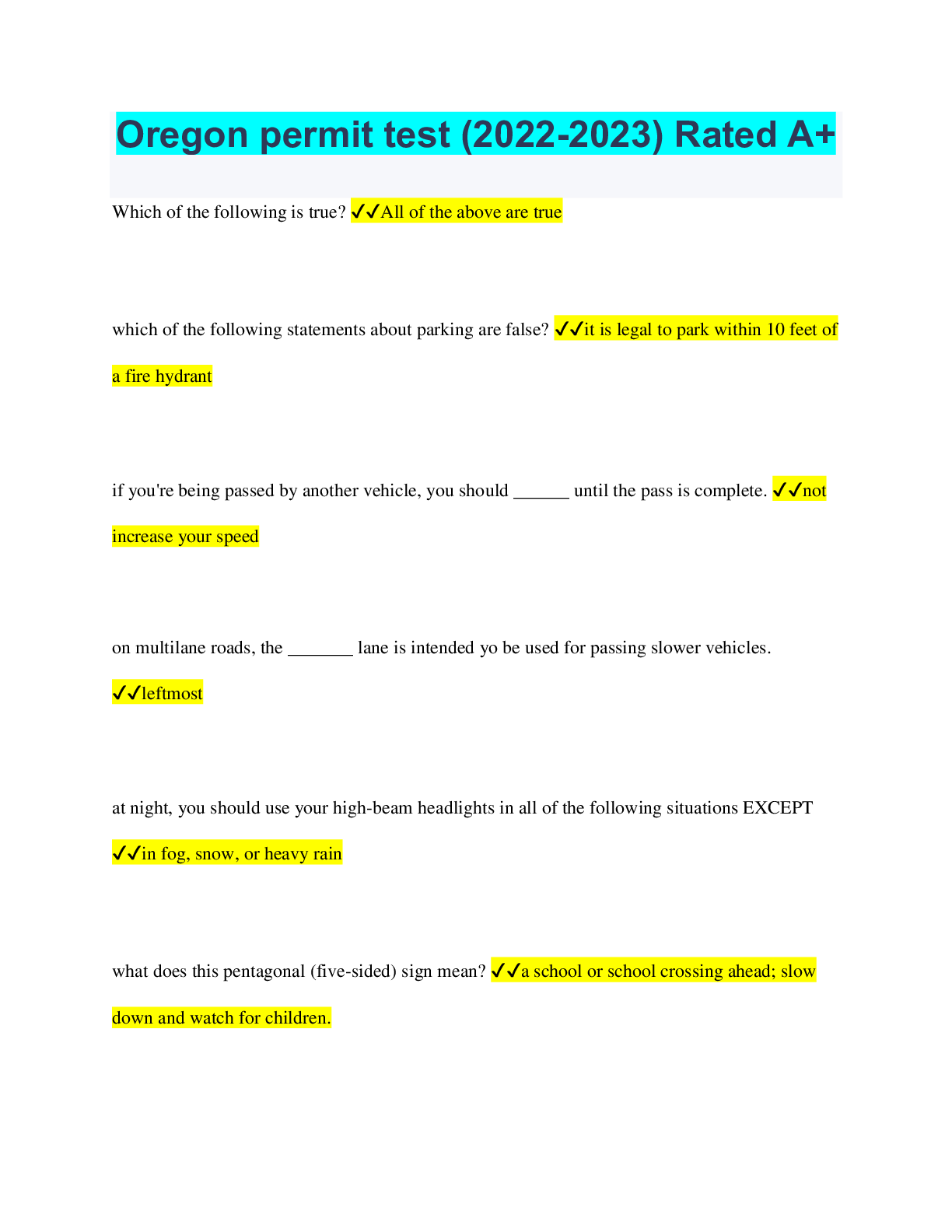
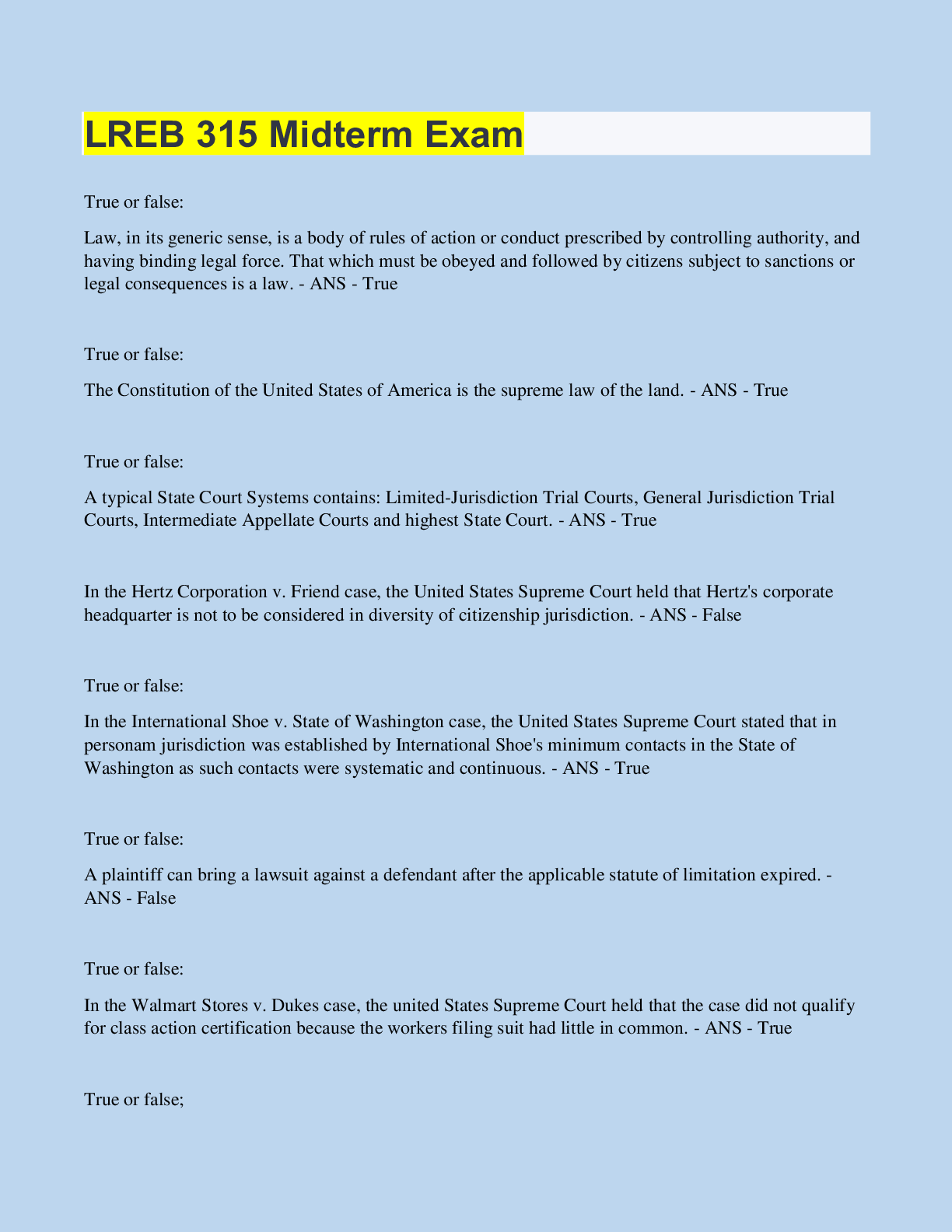

 (1).png)
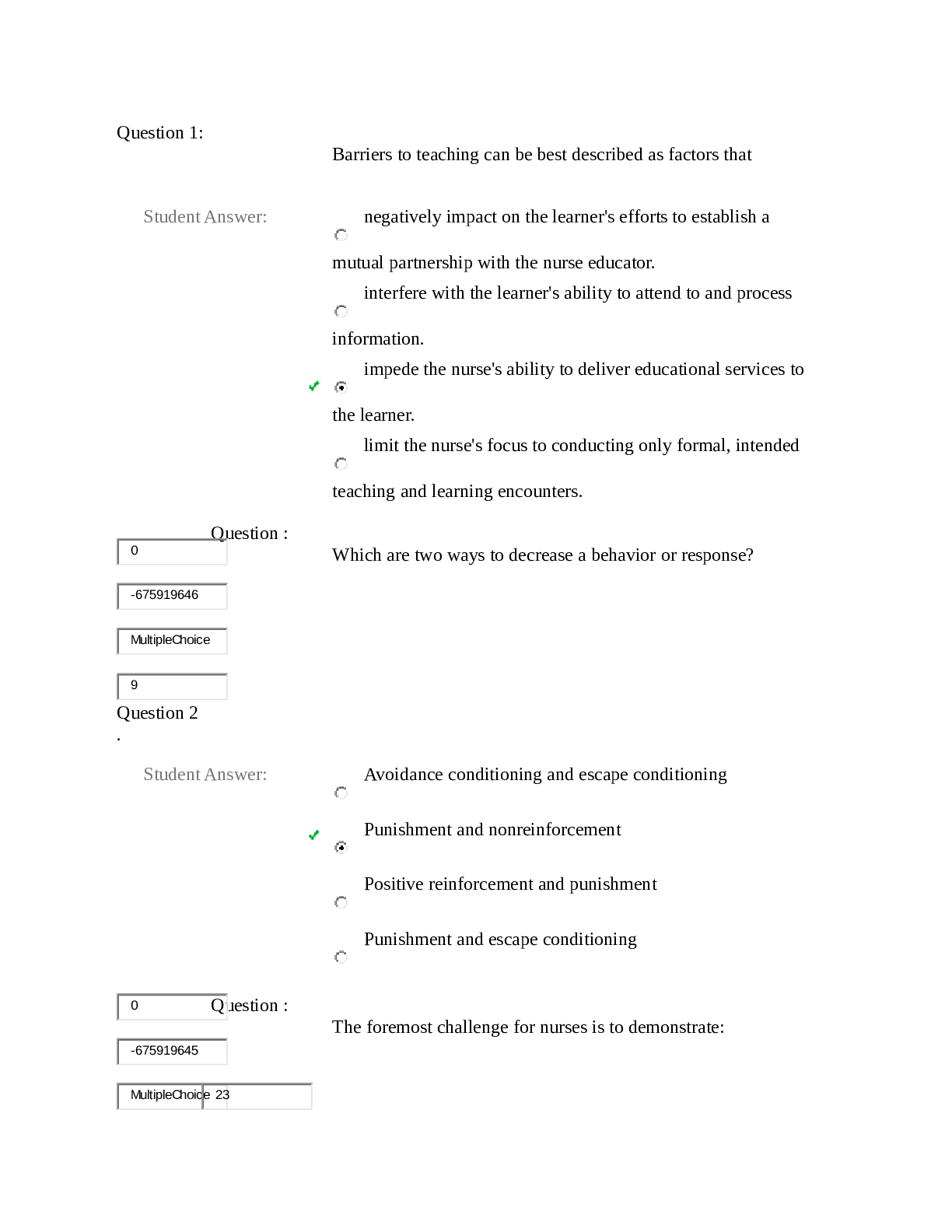



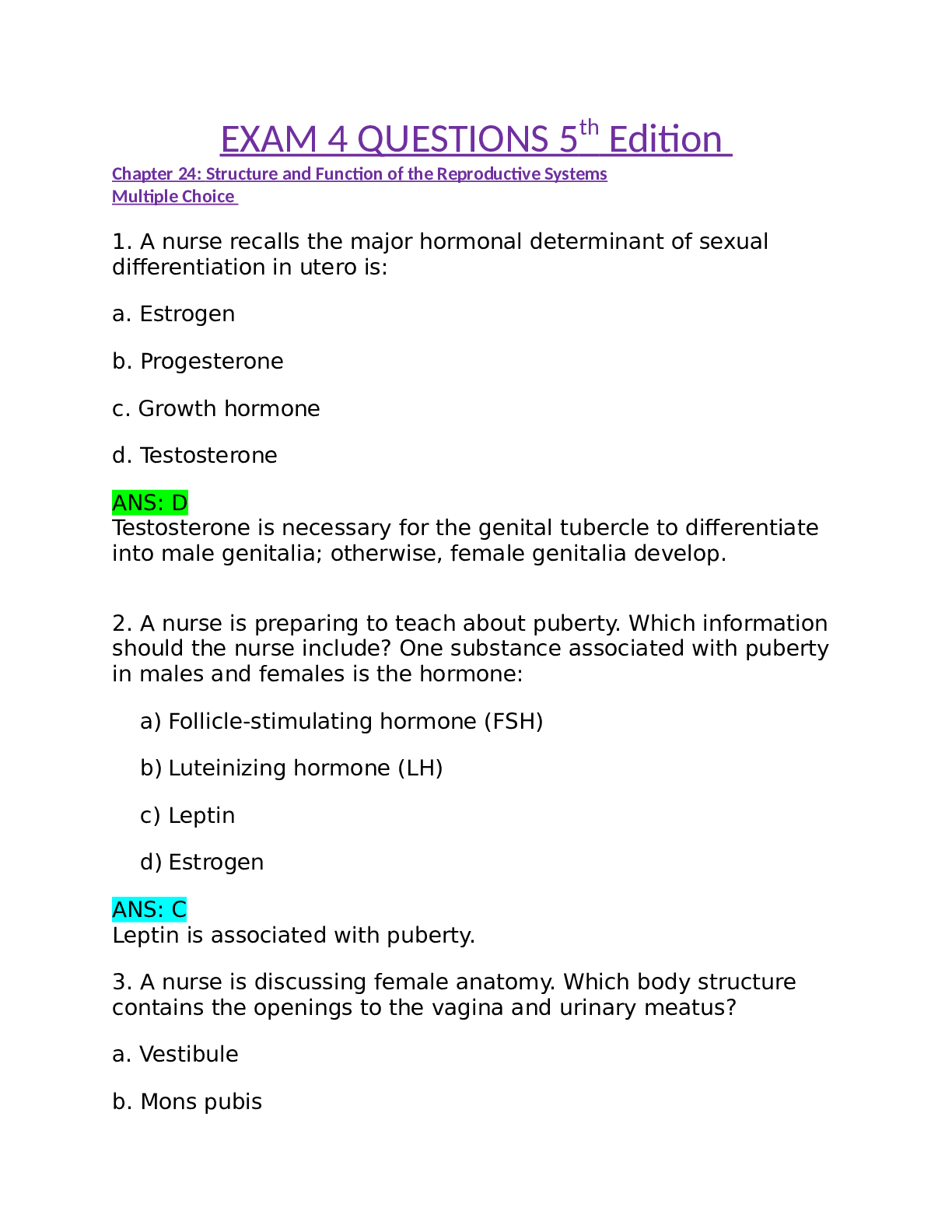
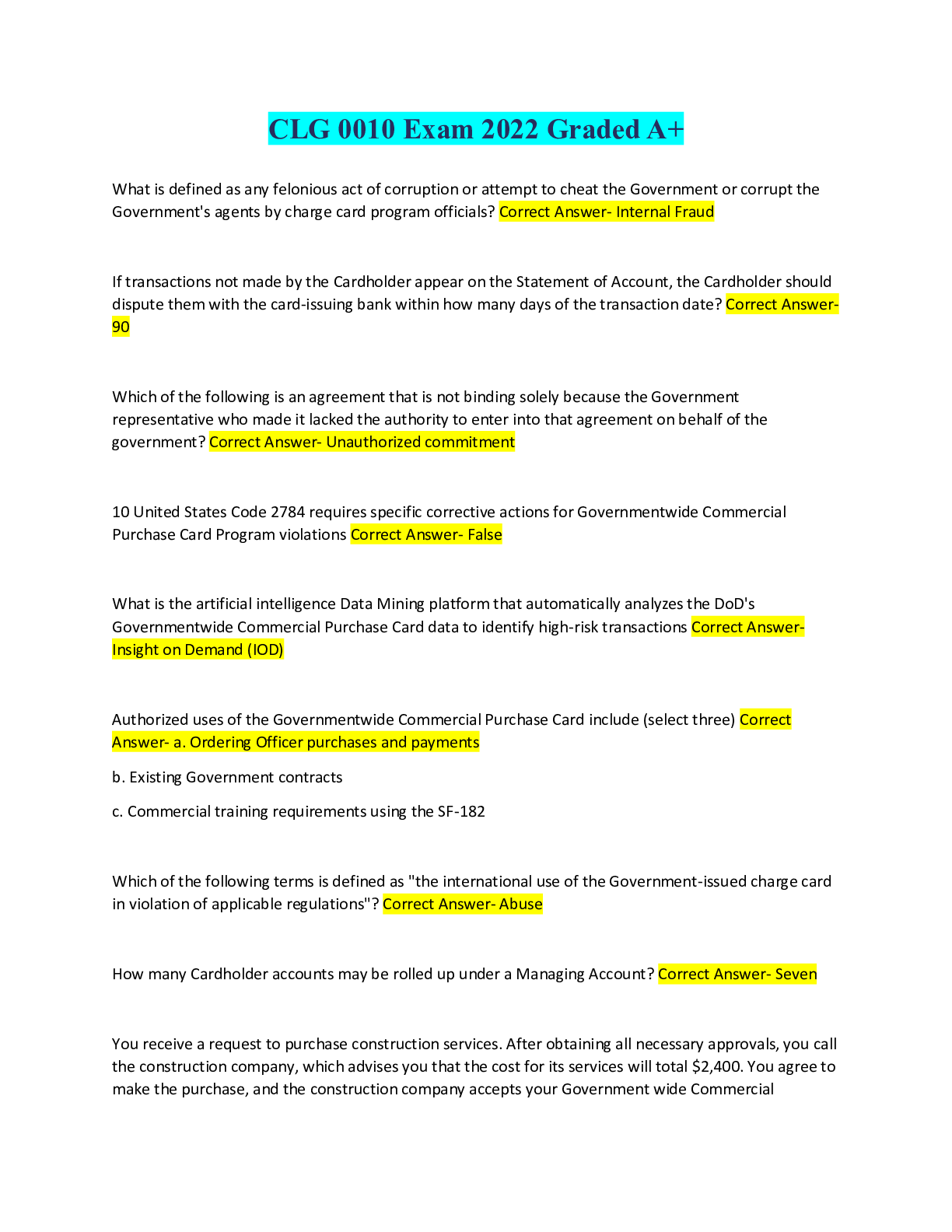
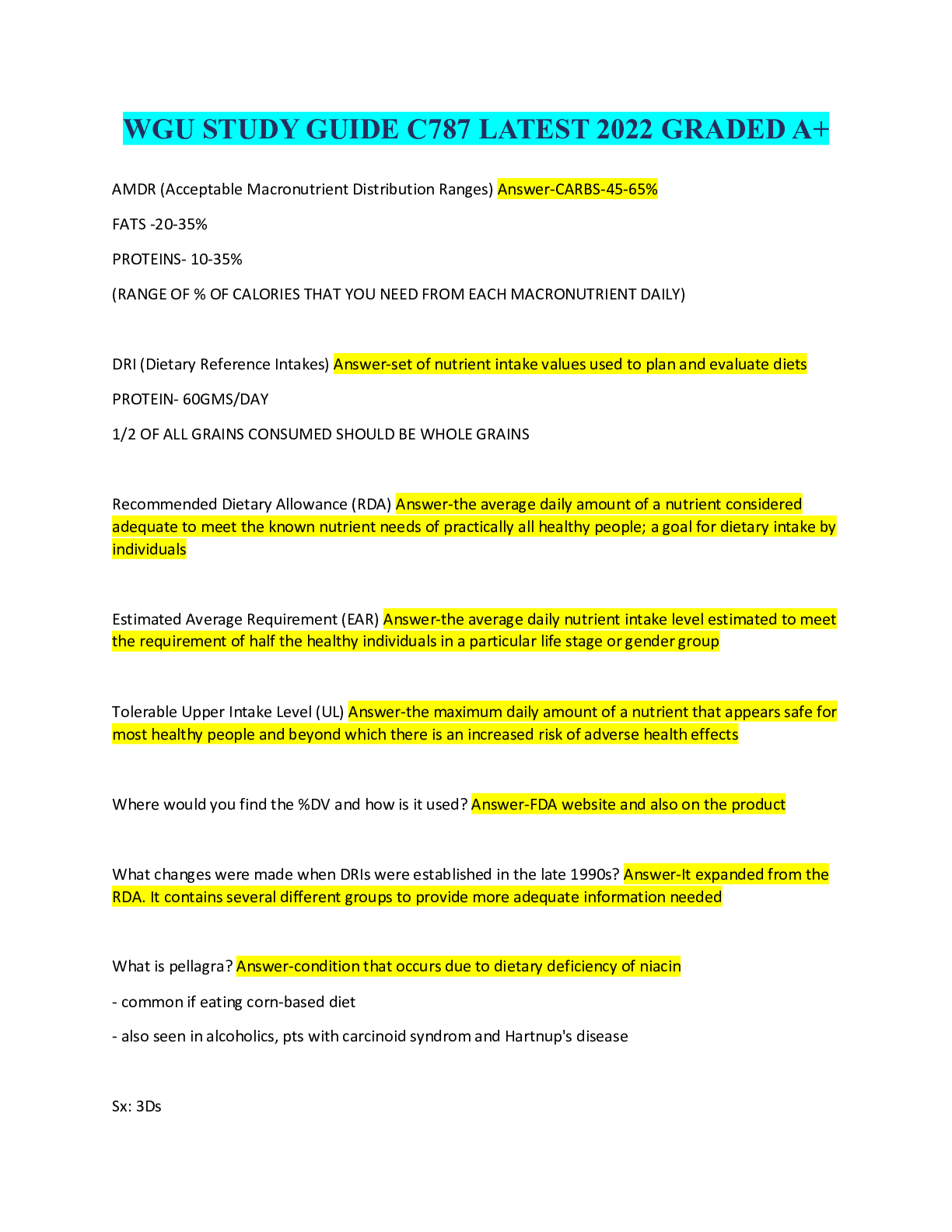
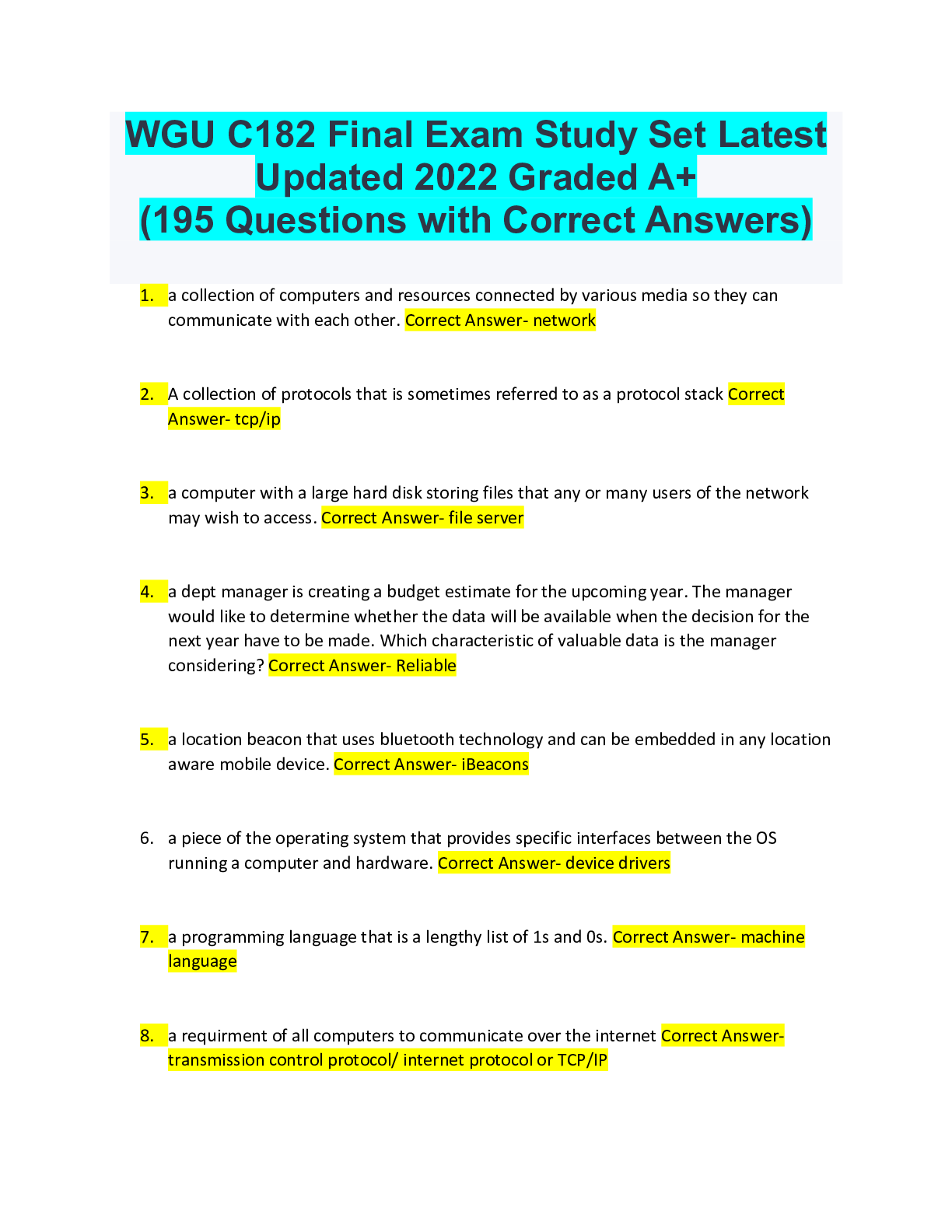
.png)

